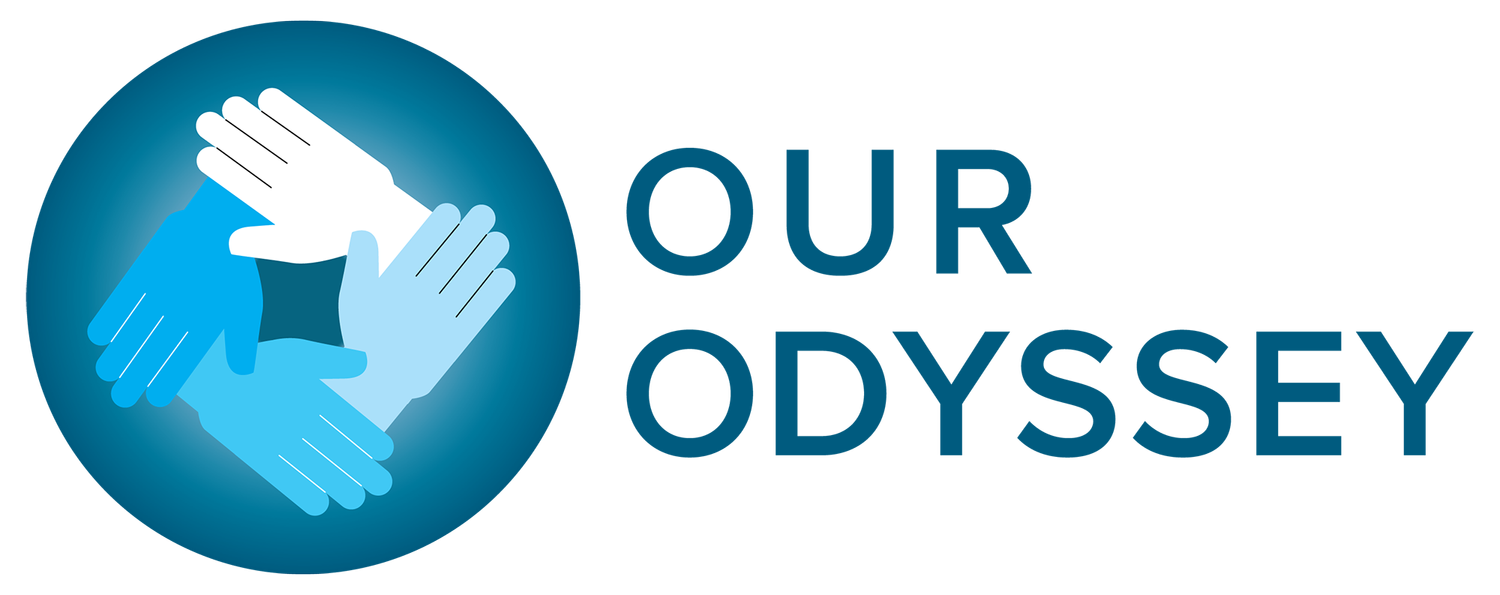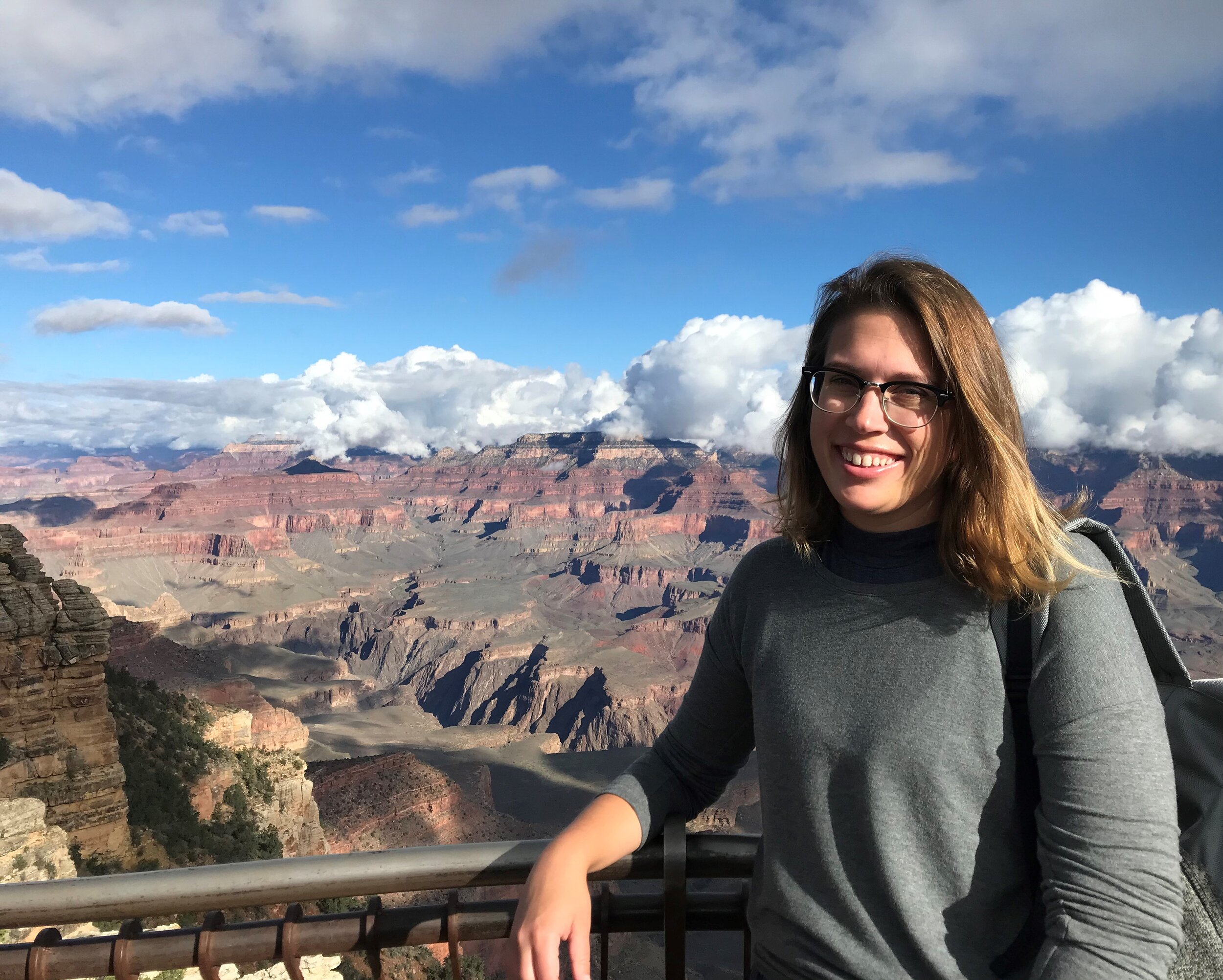The Different Versions of Healthy
A selfie of Tasia, a young white female with shoulder-length brown hair, wearing glasses and a grey long sleeve sweater. She has a backpack over her left shoulder and her right forearm resting against a steel railing. In the background, there is an overhead view of cascades of canyons with a bright blue partially cloudy sky.
At six months old, I was diagnosed with a rare metabolic disorder called Very-long-chain Acyl-CoA Dehydrogenase Deficiency (VLCAD). VLCAD is a fatty acid oxidation disorder (FAOD). Basically, it means my body is unable to convert stored fat into energy. With these types of disorders, the symptoms vary drastically from person to person and throughout the individual’s lifespan.
My childhood was relatively symptom-free, with no heart or muscular crises, which are characteristics of VLCAD. As a kid, I discovered a love for sports and became very athletic. However, commonly with FAODS, puberty can trigger more intense symptoms of the condition. At a time when the metabolism is recalibrating, puberty can bring about intense and sporadic rhabdomyolysis—muscle breakdown—releasing dangerous particles into the bloodstream.
My childhood, filled with carefree physical activity, got swiftly replaced with continuous muscle pain, weakness, and hospitalizations. I can still exercise, but I need to be mindful of the type of activity and its duration. I must make sure I have consumed enough of the right type of calories before exercising. Plus, I need to be aware of whether I will need extra energy preserved to be exerted elsewhere. Over time, I have developed an ability to differentiate between normal muscle soreness caused by exercise and that caused by rhabdomyolysis.
Growing up, I had to face a series of challenges due to my limitations. These included having “special” snacks at school, envying my friends who could eat pizza, and explaining to my girlfriends why I could never do the keto diet. During my adolescence, the symptoms stabilized thankfully, with some help from an experimental medication. Regardless, I still need to be careful and intentional with my diet and exercise.
I constantly have to navigate my food and alcohol restrictions. Most social events happen around food and drinks—both of which I struggle to partake in. I have made so many different modifications to maintain a semblance of a social life. Carry around a red solo cup with water in it or a glass with seltzer instead of alcohol? Check. Receive blank stares from waiters when I order my meal but request it without oil, butter, or cheese? Check. Struggle to fill out the dietary restriction section of an event RSVP—low fat, heart-healthy—only to give up and decide to bring my own lunch? Check. To make it even more interesting, my medication is an oil made from a synthetic fat that my body can actually process for energy. I try to avoid the stares as I quickly tip the glass vial from my purse into a drink.
The society we live in has very specific definitions of what is considered “healthy”—and they do not work for so many of us. At times, what is deemed “healthy” can actually make some people really sick. When my symptoms flare-up, I have to stop exercising and need to eat/drink extra carbohydrates to slow the rhabdomyolysis. The hospital treatment is an infusion of D10 (dextrose, a type of sugar) to flood the body with carbohydrates to stop it from breaking down muscle. It feels like a never-ending cycle of building up strength and restoring a comfortable weight that is healthy for me, to then have to let all that hard work go when I flare-up. It’s both physically and mentally tough to be in this constant cycle without the unnecessary addition of people’s uninformed commentary.
“Healthy” is not a one-size-fits-all. It has taken me years to accept that when I go into crisis I will have to do certain things that society considers “unhealthy” in order to stop long-term damage to my muscles. As the patient, it’s important to remember your worth, and trust in yourself and your care team to know what is best for you—not your co-worker who swears by intermittent fasting. I’m grateful that I have stopped trying to blend in and hide my quirks and instead welcome the questions from others, even if their approach could use a little work because that is best for me.
Tasia Rechisky (@trechisky,#vlcadprobs) was diagnosed as an infant with a rare metabolic disorder, Very Long Chain Acyl Coa Dehydrogenase Deficiency (VLCADD). She has spent the last twelve years as a patient advocate—speaking about her lived experience, working with pharmaceutical companies and other organizations to improve resources in the rare disease space, and fighting on behalf of rare disease legislation. She is a Committee Member for Rare New England (RNE), @rarenewengland, on the planning committee for the international metabolic conference (@mitoaction) and recently testified at the FDA for a medical trial she has been on for fifteen years contributing to its approval process. She is also a member of YARR, Young Adult Representative of Rare Disease Legislative Advocates @hearusyarr, and a contributor to the Mighty. In her free time, she is a creative writer and loves to travel both near and far.


